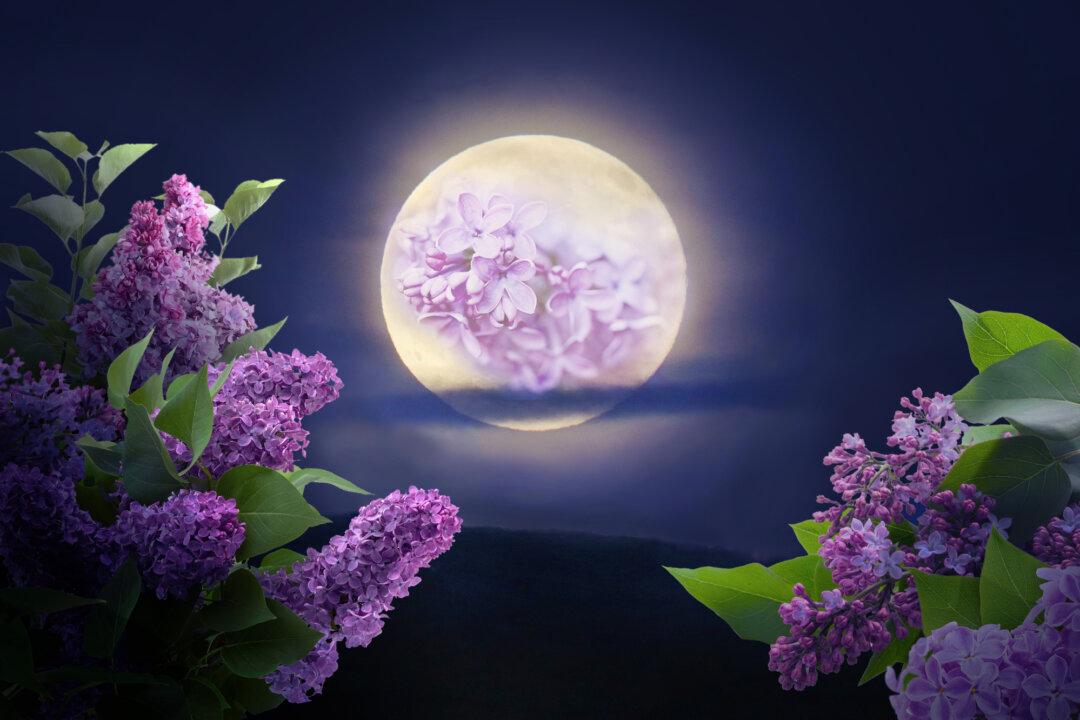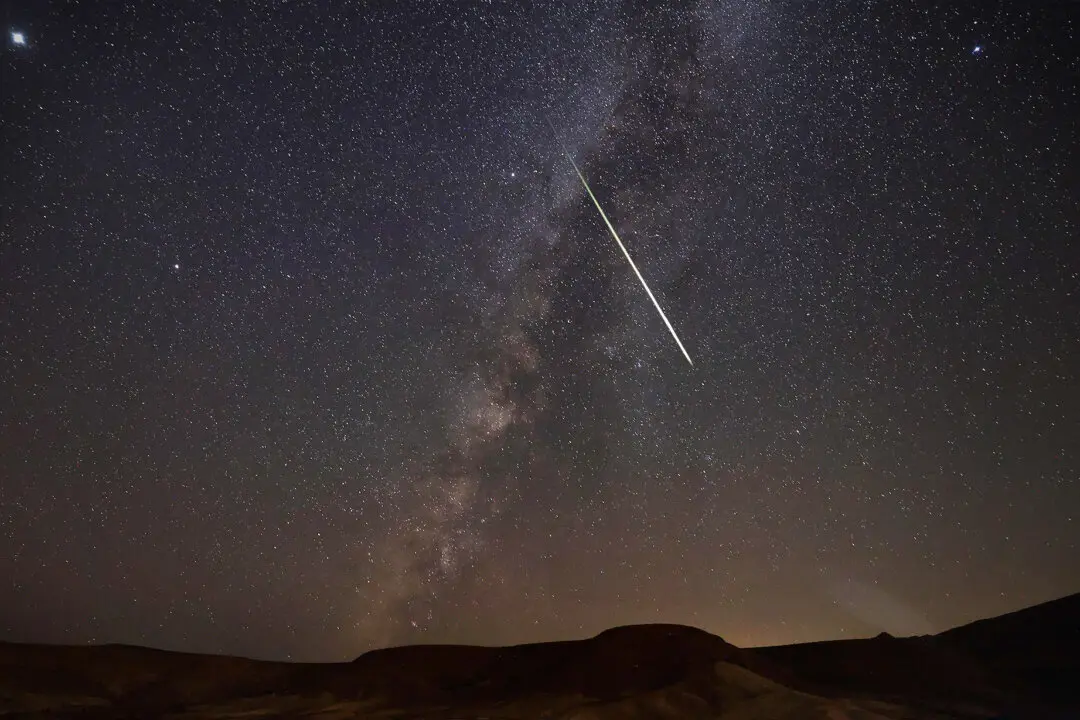As full moons go, next month’s will be beyond the ordinary. The so-called Full Pink Moon in May, named after the month’s blooms, will appear to have shrunk to a miniature size and dimmed noticeably darker, and will also block out the red star Antares—the “heart of the scorpion” in Scorpius.
Peaking on May 12 at 12:56 p.m. EDT, the Full Pink Moon will rise to the east and hang relatively low in the sky, as it will around the spring equinox. But a keen observer might notice a distinct difference in its appearance.





